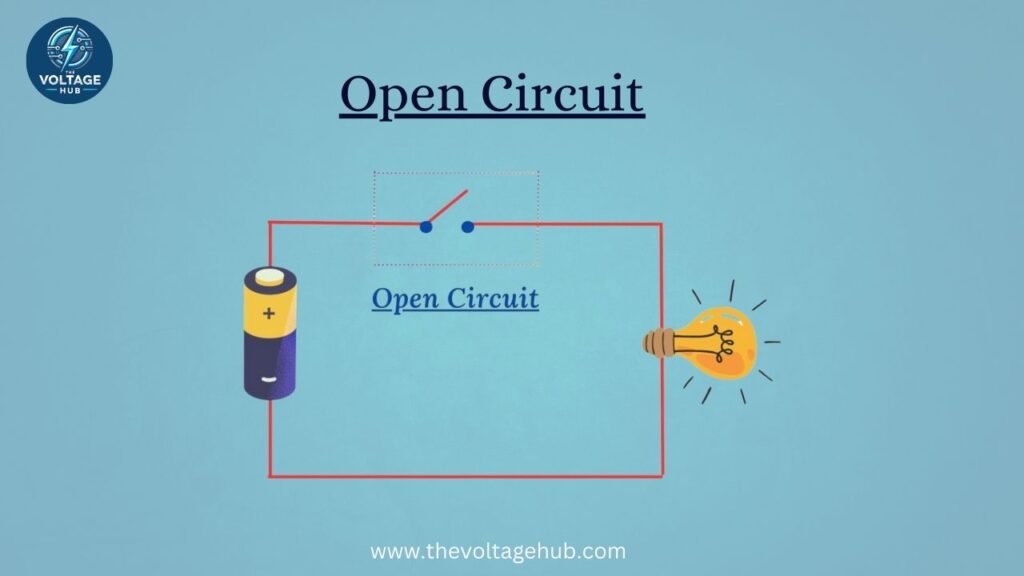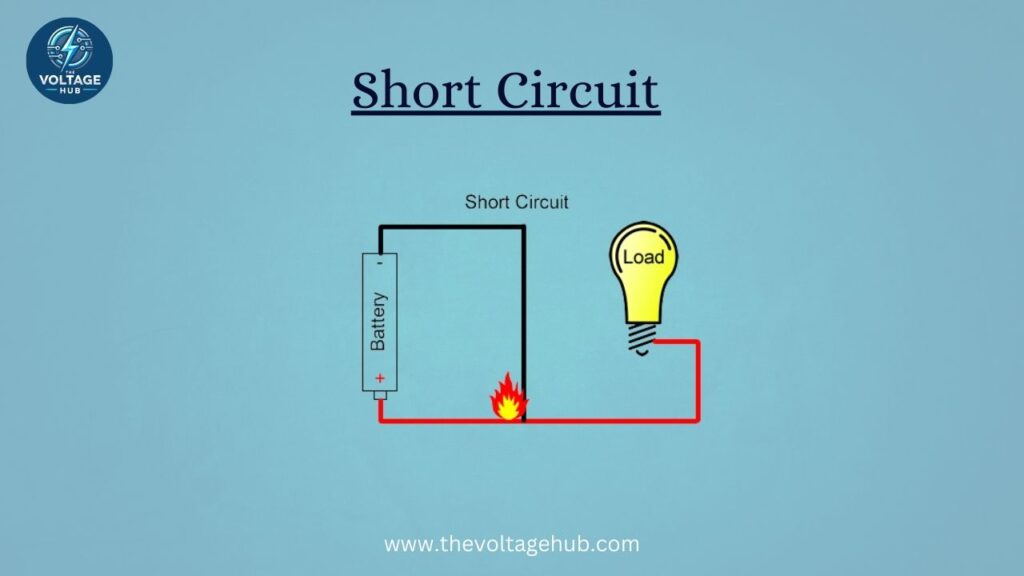Table Of Content
The principles of open circuit and short circuit are basic to both students and practitioners through their studies and practice in electrical engineering, electronics, and other related fields. Both terms are vital in diagnosing and designing safe and efficient electrical systems. In this article, we look at the definition, causes, effects, prevention methods, and applications of open and short circuits.
What is an Open Circuit?
Definition
An open circuit is an incomplete or broken path for electricity, and electric current cannot flow in it. The break of a circuit could either be deliberate or it could also be accidental on account of faults and damages.

Conditions for Circuits to be called as Open Circuit
- Current = 0 Amp (Always)
- Voltage = +ve, -ve or 0 Volt (can be any value)
- Resistance = ∞ Ω (Always)
Causes of Open Circuits
- Switching Devices: An open switch creates an open circuit to halt the flow of current.
- Damaged Conductors: Wires or broken connections can be subjected to mechanical stress, corrosion, and wear that lead to eventual breaks.
- Faulty Components: Failure in components such as resistors, capacitors, or other circuit elements.
- Physical Environmental Factors: Heat, moisture, or vibration causing physical damage or disconnection.
Examples and Applications
- Light Switches: An open in a light switch produces an open circuit that stops the flow of current to the bulb.
- Battery-Powered Devices: An open circuit results whenever the battery is removed or when a connection breaks.
- Safety Mechanisms: Circuit breakers open the circuit in case of overloads for equipment protection.
What is a Short Circuit?

Definition
A short circuit is an unintended path of low resistance in an electrical circuit, having excessive current there through. It may lead to overheating, damage of components, and could be hazardous with a potential risk of fire.
Conditions for Circuits to be called as Short Circuit
- Voltage = 0 Volt (Always)
- Current = +ve, -ve or 0. (can be any value)
- Resistance = 0 Ω (Always)
Causes of Short Circuits
- Damaged Insulation: Exposed wiring or damage to the insulation, by which conductive parts are directly contactable.
- Loose Connections: Wires that are not well-secured may touch parts or surfaces unintentionally.
- Overloaded Circuits: Excessive current flow causes the heating of wires that might further cause the melting of insulation, hence leading to short circuits.
- Moisture Intrusion: Water or moisture may create conductive paths between circuit elements.
Examples and Implications
- Household Wiring: Short circuits in home wiring are one of the major causes of power outages or damaged appliances.
- Industrial Equipment: Failure in industrial equipment results in time-wasting and costs a lot because of their time-consuming repairs.
- Overloads: The short circuit in lithium-ion batteries may result in overheating, which can further cause an explosion.
Differences Between Open and Short Circuits
| Aspect | Open Circuit | Short Circuit |
|---|---|---|
| Definition | Broken path, no current flow | Unintended path, excessive current flow |
| Resistance | High or infinite | Very low |
| Voltage Across Break | Equal to source voltage | Nearly zero |
| Current Flow | None | Excessive |
| Safety | Typically safe but causes non-functioning | Hazardous and potentially damaging |
Testing and Diagnosing Open and Short Circuits
Tools for Diagnosis
- Multimeter: A device used in testing voltage, resistance, and continuity of a circuit.
- Clamp Meter: Helps detect excessive current indicating short circuits.
- Circuit Tracers: Locate breaks or accidental connections.
Testing for Open Circuits
- Continuity Test: The amount of resistance that is measured to know if the circuit path is open or complete.
- Voltage Test: Establish where within the circuit the voltage is lost.
Short Circuit Testing
- Current Flow Test: Abnormal current levels are detected using a clamp meter.
- Visual: Check for any melted insulation, exposed wires, or burnt components.
Prevention Techniques
For Open Circuits
- Regular Maintenance: Look at the condition of wires and their connections.
- Proper Installation: Components must be securely attached to each other at the time of installation.
- Protection of Environment: Protect the circuit from moisture and dust using enclosures.
For Short Circuits
- Quality Insulation: The use of high-quality insulated wires and components is recommended.
- Circuit Breakers and Fuses: Protective devices shall be installed to interrupt excessive current flow.
- Moisture Control: Keep the circuits out of humid areas or waterproof their enclosures.
Real-World Applications
Open Circuits
- Switch Mechanisms: Household and industrial controls.
- Safety Measures: Equipment such as emergency stop buttons work based on open circuits to stop functionality.
- Testing and Debugging: Open circuits help in the isolation of faults during diagnostics.
Short Circuits
- Fault Protection: Short circuits must be understood and their effects mitigated during the design of robust power systems.
- Battery Safety: The batteries’ short-circuit protection circuits do not allow heating up and consequent explosions.
- Electric Devices: Overcurrent protection mechanisms extend the service life of sensitive components.
Conclusion
The open circuit and short circuit are just the two sides of a coin, where one stops the flow of current, while the other results in uncontrolled flow. Their causes, effects, and ways of prevention are to be learned for safe and efficient electrical systems.
Be you a professional engineer, an electronics enthusiast, or a curious learner, the mastery of these concepts will grant you skills to troubleshoot problems with ease, design safer systems, and appreciate the intricacies of modern technology.


